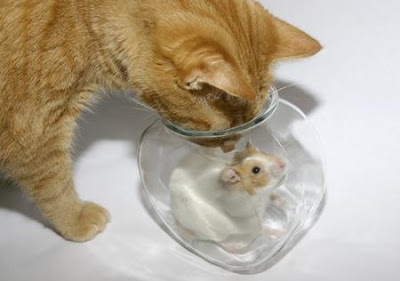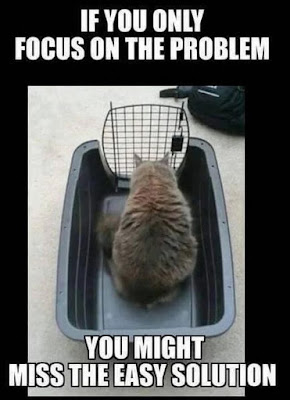Lean Management
Lean Management is a system to create more value for customers with less resources and limited wastes. Lean management is a culture either in service or manufacturing sector to increase productivity and efficiency.
Saturday, August 5, 2023
who should do the dishes?
Monday, July 17, 2023
Risk in Containment process
The most common item to overlook in the CAPA process can be the easiest yet complicated section, Containment.
What and how do you manage containment?
Containment process is a series of actions to limit or eliminate further non-conformance.
The most common example of containment actions are:
- Segregation of bad products at customer, transit and manufacturing site.
- Adding an alert or inspection steps.
- Modified process settings to mitigate problems.
When recording the disposition of non-conforming products, it’s required to add date, responsible process owner(s) and type of resolutions. This includes scrap, rework, sorting or use as is. Containment process typically involves several processes ad cross functional team. MRB, RMA and customer waivers to name a few.
If the above is addressed during containments process, potential findings can be averted.
Sunday, November 11, 2018
Let's talk about record control? How do you manage them?
This procedure is a compliment to Document Control process.
Record is a gain tedious but crucial in proving conformity during audits. It is the OBJECTIVE EVIDENCE we talked so many time in my last post.
Record contain the following information:
- A unique reference number as document identification
- The record title (or suitable description of the form)
- The location of the record. (office, on website link, production etc)
- The retention period which applies (typically 3 years for quality record)
- The person responsible for retaining the quality record (most probably process owner)
Friday, November 2, 2018
How to comply to Document Control procedure?
We have documentation to comply to all the ISO requirement specifically clause 4.2.3.
Per ISO 9001:2015: Documentation Control Clause 4.2.3 tells us that an organization must control the documentation required by the Quality Management System and that a suitable document control procedure must be implemented to define the controls needed to;
- approve,
- review,
- update,
- identify changes,
- identify revision status and
- provide access.
The document control procedure must clearly define the scope, purpose, method and responsibilities required to implement these parameters.
These information normally available readily in the title block. Changes regards as history on very last page while the scope, purpose, method and responsibilities is found right after title block. Typical this a template is useful to ensure consistency.
Monday, October 29, 2018
What about defect log?
- Part name:
- Process/area:
- Defect name:
- Photo Defect (Not Good or NG)
- Photo of Good part ( OK)
Thursday, October 25, 2018
What is 8D?
Corrective action and Preventive action (CAPA) can be addressed in several format, most popularly request by customer is an 8D. They are most comprehensive CAPA available and widely used by automotive industry. Simply because it covers all the IATF requirement in section:
6.1.2.2 Preventive action
8.7 Control of non-conforming process outputs, products and services
8D is short for 8 disciplines
0D
Define pre-requisite such as affected product, PO/SO#, owner, reporter, manufacturing plant, total product sent, total affected parts etc.
2D
Establish a team- Establish relevant owner from different function which would be a great source of knowledge and ideas during brainstorming session. Yes, we sometimes hate to pull people away from their job, we are know they love their job and it's really hard to get away 😆 but it is necessary. No, we don’t need to call in food every time we have a meeting, but I have to admit, you get full attendance if you do, just saying.
 |
| Yeap, my kinda team. 😎 |
3D
Problem description, lot#, where it happened, what is the issue (may use the what, when, who, why, and how method)
4D
Interim Containment - locate all suspected products either at store, in-transit, customers site or on the field. Be sure to check every area where the parts may have been transported to, or stored at or still waiting to be processed.
5D
Root Cause Analysis- Investigates how issues might occur through Fishbone method (also known as Ishikawa diagram or cause and effect diagram, this is part of 7 QC tool), you may also use the 5 whys method.
This gets tedious but you have to exhaust all ideas until you kind of ran out of it. For example, Machine is faulty, why? Because the gear was damaged, why? Well because there was a nick on every revolution within the gear, why? Because sharp debris scrapped the wheel off during machining process....
 |
| Figuring out how it end up in there... |
6D
Solution and Verification- solutions can be training, new or change in procedures, design change, machines or process improvements. Best to match solution with root cause that was determined earlier so you cover all potential problems.
 |
| Ditto |
7D
Preventive action to ensure proper doesn’t recur. This could be done by extending the solution to other product family or similar machines. (Eg.-Poka-Yoke, tool change, added software etc)
8D
Congratulate team. Perhaps acknowledging them during monthly meeting or company newsletter.
 |
| Pretty much it! |
Monday, October 22, 2018
Interview Questions for Quality technician/inspector
 |
| My last job, I took care of the company account. Yes, with this calculator. |
- Can you provide example some project or activities you work in your previous job?
- What do you like about your previous job and why did you leave your previous job?
- Have you ever work with ......? (e.g. SOP, certain test equipment, quality tools, Microsoft, SPC software etc)
- Have you any experience working with......? (e.g. Engineering, sales, production etc)
- How do you feel about putting extra hours/time if company requires it?
- What do you see yourself in 5 years?
- What do you consider your biggest weakness?
- What do you know about our company?
- Why do you want to work with us?
- Do you have any questions you like to ask us?
 |
| I have a great sense of humor. |












